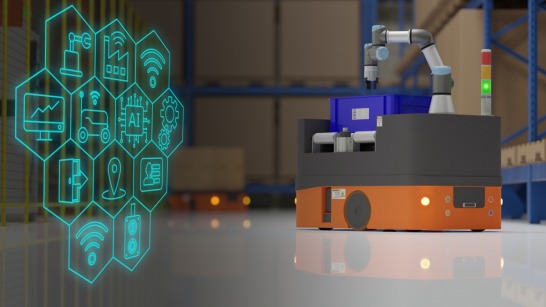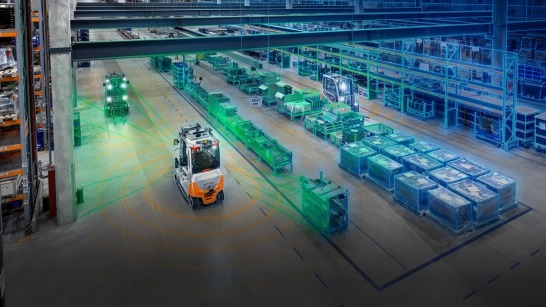Training Data for AI
“Data is the new gold, if you will,” says Peter Krumbholz. But what does he mean by this? “Companies that master sensor technology can use it to train neural networks and artificial intelligence. The more high-quality data there is available, the better products and solutions can be provided to the customer, which ultimately increases revenue,” explains Krumbholz. Research projects like the ARIBIC project, started in 2021 by the software company LeddarTech, the Karlsruhe Institute of Technology (KIT), the STARS Lab at the University of Toronto and KION, therefore produce huge volumes of images and data, which are used to train neural networks.
In a process known as “labeling,” countless photos of an object are shown to the system, from a range of directions and perspectives and in a variety of quality and lighting conditions. This is repeated until the system is able to recognize the object itself and knows, for example, whether it’s a forklift truck or a pallet. The training phase involves a lot of work but is a key element in autonomous interaction between man and machine.
Greater Than the Sum of Its Parts
The interplay between AI, cloud technology and sensor technology is giving rise to something new, which is greater than the sum of its individual parts. The ultimate goal is “machine vision.” “This would enable the technology to make its own decisions,” explains Alexander Billiet from Dematic, adding, “but we’re not quite there yet.”
And yet, at the moment, it’s already about more than just increased automation and this relates to the subtle difference between automation and autonomy. “Automation generally refers to repeated processes that run without self-adaptation. Autonomy, on the other hand, refers to systems that react to their environment and its influences,” explains project manager Krumbholz. Hybrid systems currently dominate day-to-day warehouse processes as they are used both for automated and autonomous solutions.
One example of this is the iGO Neo order picker from KION subsidiary STILL. The forklift truck largely acts autonomously in mixed operation, but does, however, rely on safety-certified laser scanners to comply with safety standards. The Machine Directive which applies Europe-wide and the relevant standards derived from it require AGVs to meet a level of safety that AI-assisted imaging is yet to meet.
In the meantime, that is not deterring KION Group constructors and engineers from integrating machine vision into safety-certified systems and having both systems work together. Krumbholz: “Certain AGVs use machine vision to move through the warehouse, while the certified laser scanners have the last word in crucial moments and prevent collisions.” He believes that it won’t be long before machine vision can attain the required safety level on its own.





